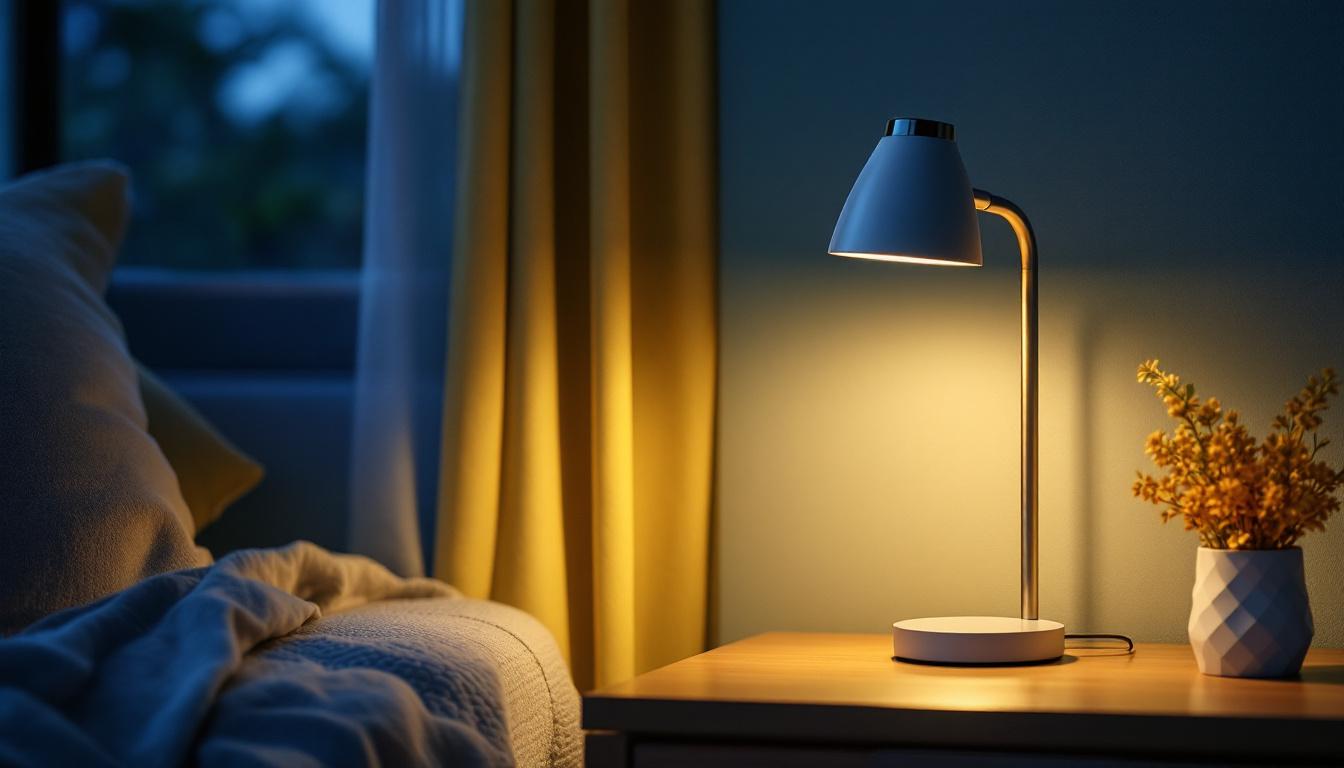
In the realm of modern lighting design, innovation is key to creating functional and aesthetically pleasing environments. Among the various advancements, motion-activated lamps have emerged as a crucial element, often overlooked in many lighting projects. These lamps not only enhance convenience but also contribute to energy efficiency and safety. This article explores the significance of motion-activated lamps, their applications, and the benefits they bring to both residential and commercial spaces.
Motion-activated technology has transformed the way lighting is approached in various settings. Initially popularized in outdoor security lighting, the application of this technology has expanded into indoor environments, proving to be a versatile solution for a range of lighting needs.
At the heart of motion-activated lamps are motion sensors, which detect movement within a designated area. These sensors can be passive infrared (PIR), ultrasonic, or dual technology. Each type has its unique advantages, making it essential for contractors to understand their functionalities when selecting the right lamp for a project.
PIR sensors, for instance, are highly effective in detecting heat emitted by moving objects, making them ideal for indoor spaces where people frequently move. Ultrasonic sensors, on the other hand, use sound waves to identify motion, providing a broader detection range. Understanding these differences allows contractors to make informed decisions that enhance the effectiveness of their lighting solutions.
The versatility of motion-activated lamps allows them to be utilized in numerous settings. In residential spaces, they can be installed in hallways, bathrooms, and garages, providing illumination only when needed. This not only enhances safety but also reduces energy consumption, as lights are not left on unnecessarily.
In commercial environments, motion-activated lamps can be particularly beneficial in areas such as warehouses, offices, and retail spaces. They can be programmed to turn on when employees or customers enter a room, ensuring that lighting is only used when necessary. This capability can lead to significant cost savings over time, making motion-activated lamps an attractive option for business owners.
Moreover, the integration of motion-activated technology in smart homes has opened up new avenues for convenience and energy efficiency. Homeowners can now control their lighting systems remotely, allowing them to adjust settings based on their daily routines. For instance, lights can automatically dim or brighten based on the time of day, or even respond to the presence of pets, ensuring that energy is conserved without sacrificing comfort. This level of customization not only enhances the user experience but also contributes to a more sustainable lifestyle.
Additionally, the growing trend of incorporating motion-activated technology into public spaces, such as parks and community centers, has led to improved safety and accessibility. By illuminating pathways only when movement is detected, these systems can deter potential criminal activity while also providing a welcoming environment for visitors. As cities continue to embrace smart technology, the potential applications for motion-activated lighting are boundless, paving the way for smarter, safer urban living.
Incorporating motion-activated lamps into lighting projects offers several advantages that go beyond mere convenience. These benefits can significantly impact both the functionality and sustainability of a space.
One of the most compelling reasons to integrate motion-activated lamps into lighting designs is their energy efficiency. By ensuring that lights are only activated when needed, these lamps help reduce energy consumption. This not only lowers utility bills but also contributes to a more sustainable approach to lighting.
Furthermore, many motion-activated lamps are designed with LED technology, which is inherently more energy-efficient than traditional incandescent or fluorescent bulbs. The combination of motion sensors and LED technology creates a powerful duo that maximizes energy savings while providing adequate lighting. Additionally, the longevity of LED bulbs means that replacements are less frequent, further minimizing waste and the environmental impact associated with manufacturing and disposing of light bulbs.
Safety is a paramount concern in both residential and commercial settings. Motion-activated lamps play a crucial role in enhancing safety by illuminating pathways, stairways, and entry points when movement is detected. This immediate response to motion can prevent accidents and falls, particularly in dimly lit areas.
In commercial spaces, the presence of motion-activated lighting can also deter potential intruders. Well-lit areas are less appealing to those with malicious intent, making these lamps an essential component of a comprehensive security strategy. Moreover, advanced models can be integrated with security systems, sending alerts when unusual movement is detected, thus providing an additional layer of protection for properties and their occupants.
Convenience is another significant advantage of motion-activated lamps. For homeowners, the ability to walk into a room and have the lights automatically turn on eliminates the need to fumble for switches, particularly when carrying items. This is especially beneficial in high-traffic areas such as kitchens and living rooms.
In commercial environments, the user experience is enhanced as well. Customers can navigate stores or offices without the hassle of manually turning on lights, creating a more inviting atmosphere. This seamless interaction with lighting can significantly impact customer satisfaction and overall experience. Furthermore, many motion-activated lamps come with adjustable sensitivity settings, allowing users to customize how they interact with the lighting. This adaptability ensures that the lights respond appropriately to different environments, whether it’s a bustling retail space or a quiet office, enhancing both functionality and comfort for all users.
While the benefits of motion-activated lamps are clear, there are several considerations that contractors must take into account when incorporating them into lighting projects. Understanding these factors can lead to more successful installations and satisfied clients.
As previously mentioned, different types of motion sensors offer varying benefits. Contractors should assess the specific needs of each project to determine which sensor type is most appropriate. For instance, in areas with high ceilings, ultrasonic sensors may be more effective due to their broader detection range.
Additionally, the placement of sensors is crucial. Contractors must ensure that sensors are positioned to effectively cover the desired area without being obstructed by furniture or other objects. Proper installation can significantly enhance the performance of motion-activated lamps.
As smart home technology continues to gain popularity, the integration of motion-activated lamps with smart home systems presents an exciting opportunity for contractors. Many modern motion-activated lamps can connect with home automation systems, allowing users to control their lighting through smartphones or voice commands.
This integration not only enhances convenience but also allows for greater customization. Homeowners can set specific lighting schedules or adjust sensitivity levels based on their preferences, creating a tailored lighting experience that meets their unique needs.
While motion-activated lamps can lead to long-term savings through energy efficiency, contractors must also consider the initial investment. The cost of motion-activated lamps can vary significantly based on features, brand, and technology. It is essential to provide clients with a clear understanding of the upfront costs versus the potential savings over time.
Offering a range of options can help clients make informed decisions that align with their budgets. Additionally, highlighting the long-term benefits can justify the initial investment, making motion-activated lamps an appealing choice for many lighting projects.
To illustrate the effectiveness of motion-activated lamps, several case studies can provide valuable insights into their successful implementation in various settings.
In a recent residential project, a contractor installed motion-activated lamps in a large family home. The lamps were placed in key areas such as hallways, bathrooms, and the garage. Homeowners reported a significant reduction in energy costs, as the lights only activated when family members were present.
Moreover, the added safety feature was particularly appreciated by the homeowners, who had young children. The ability to navigate the house without stumbling in the dark provided peace of mind and improved overall satisfaction with the lighting design.
In a commercial setting, a retail store implemented motion-activated lamps in their fitting rooms and main sales floor. The store noticed a marked increase in customer satisfaction as shoppers could easily navigate the space without having to locate light switches. Additionally, energy costs decreased as lights were only in use during business hours when customers were present.
The store management also reported a decrease in theft incidents, attributing this to the enhanced visibility provided by the motion-activated lighting. The combination of safety, convenience, and energy efficiency made this project a resounding success.
Motion-activated lamps represent a significant advancement in lighting technology, offering numerous benefits that can enhance both residential and commercial spaces. From energy efficiency to improved safety and convenience, these lamps are a valuable addition to any lighting project.
For lighting contractors, understanding the various types of motion sensors, their applications, and the considerations for installation is crucial. By embracing this innovative technology, contractors can provide clients with modern lighting solutions that meet their needs while contributing to a more sustainable future.
As the demand for smart and efficient lighting continues to grow, motion-activated lamps will undoubtedly play a pivotal role in shaping the future of lighting design. By incorporating these lamps into projects, contractors can stay ahead of the curve and deliver exceptional value to their clients.
Ready to enhance your lighting projects with the efficiency and innovation of motion-activated lamps? Look no further than LumenWholesale, where we provide contractors with the highest quality, spec-grade lighting solutions at unbeatable wholesale prices. Our extensive selection of motion-activated lamps meets rigorous industry standards, ensuring reliability and performance for any space. Take advantage of our hassle-free bulk buying and free shipping to secure premium lighting at the best value — all without hidden fees or compromises. Elevate your lighting designs today and experience the best in wholesale lighting with LumenWholesale.

Explore the advantages and drawbacks of LED lamps for lighting contractors in this insightful article.

Discover the essential considerations for lighting contractors when selecting exterior wall sconce light fixtures.

Discover common oversights in over bed light fixtures that lighting contractors often miss.

Discover essential tips and expert insights on outdoor LED security lights tailored for lighting contractors.